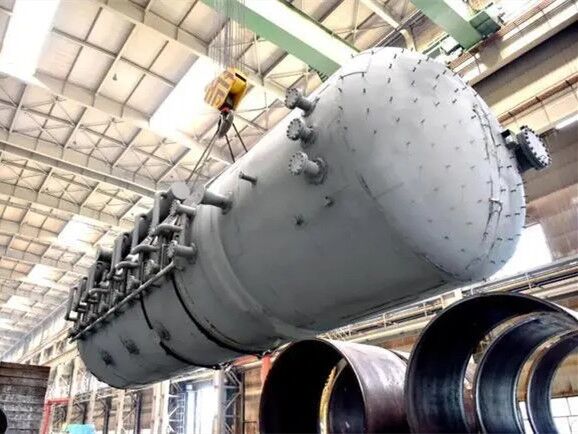Deaerator
Product Details
Deaerator function
Boiler deaerator is designed to remove dissolved oxygen in feedwater along with other gases like CO2, NH3, H2S, etc. Or else, these gases would react with metal and cause damage to components of boiler.
Deaerator types
Deaeration can be classified into two types by working principle: mechanical deaeration (thermal deaerator, vacuum deaerator) and chemical deaeration. Thermal deaerator’s working principle is mainly based on Henry’s law and Dalton’s law of partial pressure.
Henry’s law: the amount of dissolved gas in a liquid is proportional to its partial pressure above the liquid.
Dalton’s law: in a mixture of non-reacting gases, the total pressure exerted is equal to the sum of the partial pressures of the individual gases.
When feedwater is heated, partial pressure of steam above the water is increasing, while partial pressure of oxygen is decreasing. Then gases dissolved in feedwater will release into steam. When feedwater is heated up to boiling point, oxygen in feedwater is reduced to the minimum.
Thermal deaerator is widely used in power plants, because chemical deaeration has the following disadvantages:
- It can only remove oxygen.
- It would increase salt in feedwater.
- Expensive, and may be hazardous.
Chemical deaeration is only used for subcritical and supercritical boiler where oxygen is removed thoroughly.
On the market, we can see different types of deaerator by structure: vertical or horizontal, spray-packing or tray type deaerator, and built-in deaerator.
Above is a vertical packing type deaerator.
Above is a horizontal tray type deaerator. Deaeration section is mounted on the top of cylindrical vessel, which plays the role of deaerator storage tank.
Above is a spray type deaerator. Deaeration section is built inside the storage tank. It is featured with long service life, compact structure, excellent oxygen removal, reliable performance.
Function of deaerator tank
It is a buffer tank between feed pump and condensate pump. In abnormal conditions, it could supply water to feed pump continuously. This would avoid boiler running without water in tube. Tube failure caused by overheating is eliminated. Water in deaerator tank is normally 80-85% of its total volume. For 200MW boiler unit or smaller, it should supply water for consumption in 10-15 mins of 100% B-MCR. For 200MW boiler unit or bigger, it should supply water for consumption in 5-10 mins of 100% B-MCR.
Benefits of boiler deaerator
- Low exhaust steam loss. For normal deaerator, exhaust loss is 0.5%. For built-in deaerator, it is only 0.1-0.2%.
- Oxygen in treated feedwater is ≤5ppb.
We are famous deaerator manufacturer in China. We successfully supplied boiler deaerator for the first 1,000MW nuclear power plant and the first 1,000MW thermal power plant in China.
